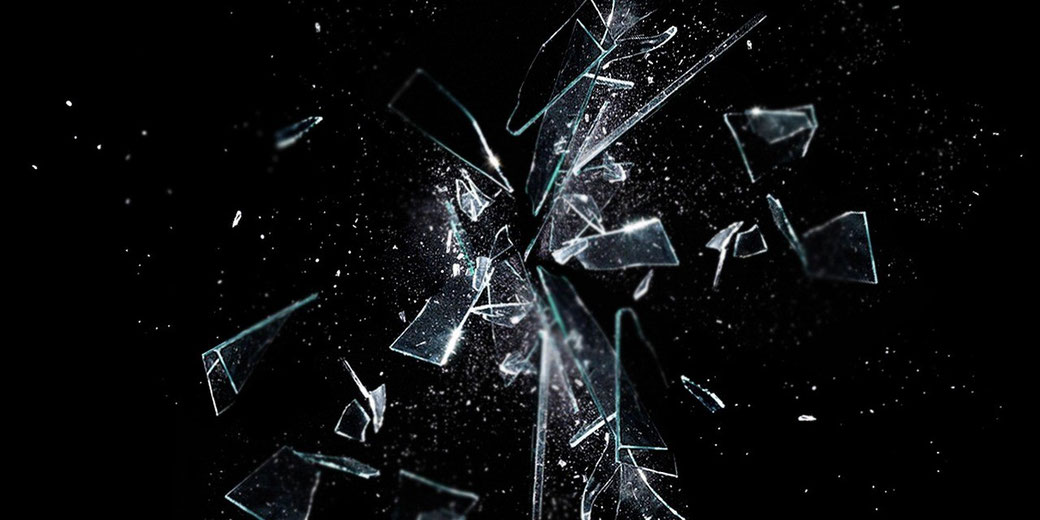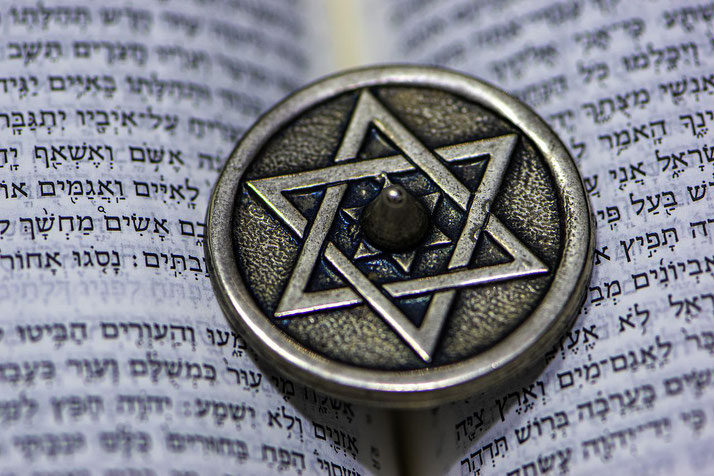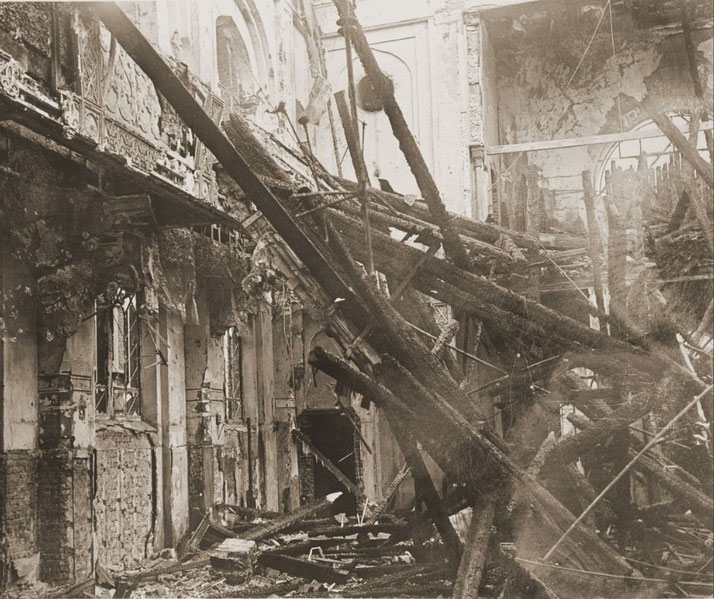Kristallnacht: The terrifying prelude to the Holocaust

In 1938, a series of coordinated attacks against Jews throughout Nazi Germany became known as Kristallnacht, or the 'Night of Broken Glass'.
The night of November 9th and 10th saw violence and destruction on a scale not seen since the Nazis had come to power.
More than two hundred synagogues were burned, over seven thousand Jewish businesses were vandalised, and Jewish homes were ransacked.
An estimated 91 Jews were killed in the violence, and 30,000 were arrested and sent to concentration camps.
What were the causes of Kristallnacht?
There were a number of factors that led to the outbreak of violence on Kristallnacht.
One immediate cause was the assassination of Ernst vom Rath, a German diplomat, by Herschel Grynszpan, a seventeen-year-old Polish Jew, in Paris on November 7th.
Grynszpan's motive for the assassination is not completely clear, but it is believed that he was acting in response to the forced deportation of his family from Germany to Poland several weeks earlier.
This deportation was part of a larger Nazi policy called the Polenaktion, which saw the mass expulsion of Jews of Polish citizenship from Germany.

The Polenaktion and other anti-Jewish policies had been met with increasing opposition from sections of the German public, and the assassination of vom Rath provided an opportunity for the Nazi leadership to turn this public opinion against the Jews.
In the days leading up to Kristallnacht, Nazi propaganda minister Joseph Goebbels had given a series of speeches in which he incited violence against Jews.
Then, on November 8th, Goebbels delivered a speech at a rally in Munich commemorating the anniversary of Hitler's failed 1923 Beer Hall Putsch.
In his speech, Goebbels called for Germans to take action against those who were "plotting" against the country.
The following day, vom Rath was buried in Berlin with full military honors. Hitler attended the funeral personally along with Joachim von Ribbentrop, the German Foreign Minister, who gave the eulogy.
In the speech, he spoke of the "sacrifice" that vom Rath had made for the German people.
This speech was broadcast on radio, and it is believed that his words helped to spark the violence of Kristallnacht.
What happened during Kristallnacht?
The night of November 9th is typically considered to be the beginning of Kristallnacht, although violence had begun in some cities earlier in the day.
Goebbels gave direct orders to Nazi officials to ensure that any violence should appear to be a 'spontaneous outburst' by the German public, though in reality, it was carefully planned by the Nazi regime.
First, in the afternoon of the 9th, the chief of the Reich Main Security Office, Reinhard Heydrich, sent a telegram to the SS (Schutzstaffel) and police leaders in which he instructed them to arrest as many Jews as possible and to not interfere with the destruction of Jewish property.
Then, the members of the paramilitary forces of the SA (Sturmabteilung) and SS were ordered to the burn synagogues and loot Jewish-owned businesses.
As a result, the attacks then began around dusk and continued through the night into the early morning hours of November 10th.
Mobs of Nazi supporters roamed through Jewish neighborhoods, destroying homes and businesses and attacking Jews on the street.
The windows of stores were smashed, and the contents were looted.
Although much of the violence of Kristallnacht occurred in large cities like Berlin and Munich, smaller towns and rural areas across Germany and Austria were also affected.
Over 1,400 synagogues, prayer rooms, and Jewish cemeteries vandalized throughout the Reich.

One of the most notable attacks took place in the city of Nuremberg, where a synagogue was burned to the ground.
The fire quickly spread to nearby homes, and several Jewish-owned businesses were also destroyed.
In Berlin, dozens of synagogues were set ablaze or otherwise vandalised. One of these synagogues was the oldest in Germany, having been built in 1672.
The Nazis also attacked the Jewish cemetery in Berlin, destroying hundreds of gravestones.
Tragically, Kristallnacht led to the loss of many invaluable Jewish cultural artifacts, including Torah scrolls, religious texts, and historical records, many of which were burned or defaced during the attacks.
In some cities, such as Hamburg and Bremen, Jews were even forced to clean up the debris from Kristallnacht.
In other cities, such as Frankfurt and Dresden, Jews were required by the authorities to watch as their synagogues were destroyed.

The aftermath of the violence
Following the riot, the German government issued a statement blaming 'the Jews' for their own persecution and imposed a one billion Reichsmark (some 400 million US dollars at 1938 rates) fine on Germany's Jewish community.
The additional property damage on Jewish-owned businesses and homes ran into the millions of Reichsmarks.
Sadly, most of this would never be recovered from insurance, as the German government took away all payouts to Jews, as they declared that they were personally responsible for the costs of any repairs.
The German government claimed that only 91 people were killed during these events, but it is believed that the true death toll was much higher.
In addition to those who were killed, tens of thousands of Jews were arrested and sent to concentration camps.
Following Heydrich's directions, the SS and Gestapo arrested up to 30,000 Jewish men, and they were transferred from local jails to Dachau, Buchenwald, Sachsenhausen, and other concentration camps.
Following the events of Kristallnacht, many Jews decided to leave Germany. In the months and years that followed, hundreds of thousands of Jews emigrated from Germany, most of them going to the United States, Palestine, or other countries.
By the end of 1938, other restrictions were placed on Jews in Germany, including a ban on Jewish ownership of businesses, a limit on the number of Jews who could attend universities, and a requirement that Jews wear a yellow Star of David badge when in public.
Why did it become such an important event?
Prior to Kristallnacht, the Nazi regime had focused on forcing Jews to emigrate from Germany through a series of increasingly restrictive laws and regulations.
However, after the violence of Kristallnacht, it became clear that the Nazis' ultimate goal was not simply to expel Jews from Germany, but also to use murder as a tool of repression.
While Kristallnacht drew widespread international condemnation, with countries such as the United States and Britain protesting the Nazi actions, most countries, including the U.S., still refused to increase immigration quotas for Jewish refugees fleeing Germany.
The next five years would see the beginning of the Holocaust, in which six million Jews would be systematically murdered by the Nazi regime.
Herschel Grynszpan, whose assassination of Ernst vom Rath was used as the pretext for Kristallnacht, was finally arrested by the Gestapo in 1940 after being handed over by the French authorities.
His ultimate fate remains unknown, though it is believed he died in German custody.
Many German Jews had still hoped that they could weather the storm and ride out the Nazi regime.
However, after witnessing the violence of Kristallnacht, many German Jews realised that there was no future for them in Germany.
This realisation led to a significant increase in Jewish resistance and activism, both inside and outside of Germany.
Further reading
What do you need help with?
Download ready-to-use digital learning resources
Copyright © History Skills 2014-2025.
Contact via email
With the exception of links to external sites, some historical sources and extracts from specific publications, all content on this website is copyrighted by History Skills. This content may not be copied, republished or redistributed without written permission from the website creator. Please use the Contact page to obtain relevant permission.





